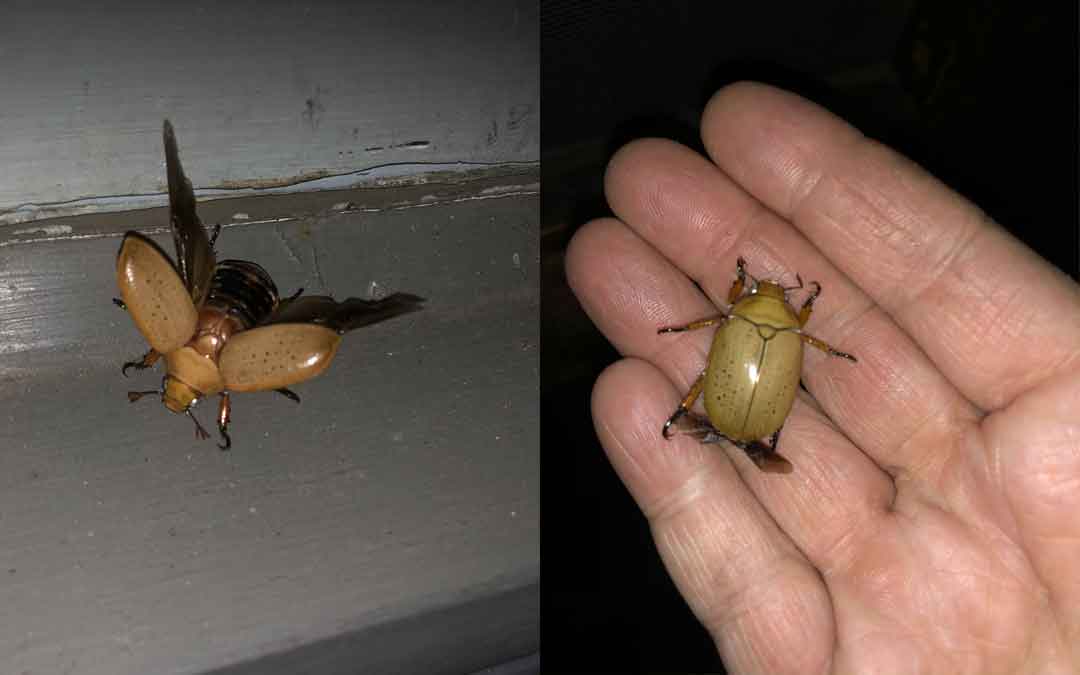The beetles bringing some Christmas bling

Christmas beetles are a delight to see. They usually appear close to Christmas time and their shimmery, shiny exoskeletons decorate flyscreen doors wide and far as they flock towards any light. Some are metallic green, others golden and bronze. All are incredibly beautiful.
Christmas beetles are a type of scarab beetle, and there are more than 30 types of them native to Australia. Chunky and growing to about 25mm long, they are bigger than other beetles found in Victoria but are less than a third of the size of the fully grown Rhinoceros beetle found in more tropical parts of Australia.
A favourite beetle
Christmas beetles are part of the Anoplognathus genus and are found across most of Australia but are much more common on the eastern side of the country. Most of our native Christmas beetles are unique to Australia. So while they aren’t as iconic as a platypus or wombat, they are our own local beetles. If there was a competition, I am confident they would win Australia’s most popular beetle because they are docile, beautiful and herald summer.
Fond memories
As a child, I remember dozens of golden shiny-backed Christmas beetles every summer holiday in East Gippsland and at home in North Warrandyte. I used to love picking them off the outside of the flywire door and feeling them tightly grab onto my fingers. Over recent years though, I have seen very few – which it turns out is a common experience. Lots of people seem to have fond memories of Christmas beetles, but haven’t seen any in quite a few years.
Are they becoming fewer?
We don’t actually know, but certainly, anecdotally they are. While invertebrate experts strongly suspect their numbers are dramatically declining, they actually can’t prove it, because there is no historical data measuring their numbers.
What we do know
Christmas beetle larvae spend about a year underground and are thought to be eating the roots of native grasses and leaf litter. The larvae look like other scarab beetle curl grubs and seem to have adapted to eating introduced pasture and turf roots. Once they pupate the beetles eat eucalypt leaves and mate, before laying their eggs near a food source. Therefore it’s likely that clearing of open grassy eucalypt forests is likely impacting them.
Help the scientists collect data
If you’d like to help create some data about where the Christmas beetles are, there is a citizen science project running. Using iNaturalist or their app on your smartphone, you can join Invertebrates Australia’s Christmas beetle count. If you see one (hint: look at night on the outside windows when lights are on inside, in low-hanging eucalypt trees with a torch and early in the morning outside windows and doors where they would have been trying to get to the light) take a picture and upload it to iNaturalist.
Last summer I saw a couple of (what I think were) ‘Washerwoman’ Christmas beetles (Anoplognathus porosus) in East Gippsland. I did my bit by joining the beetle count project and uploading my sighting to iNaturalist. While iNaturalist helps you identify what you’re seeing (and you can simply choose ‘beetle’ if that’s all you know), there is also a great free Australian Museum & Bushblitz phone app called Xmas Beetle ID Guide which will help you work out what type of Christmas beetle it is.
I’m looking forward to Christmas beetles continuing to light up my summer holidays for a long time to come.
Words and pictures by Jen Willis.
